Porsche 917 LH (1969)
1969 Porsche 917 “Langheck” (Long Tail)
Premiere: 1969 March 12 at Geneva motor show (Salon de l’Automobile Genève) press day / Engine: 4494 cc flat-12 / Gearbox: 5-speed, ratios according to race track / Wheelbase: 2300 mm / Wheels: front 9×15″, rear 12×15″
Few race cars have attained the same notoriety as the Porsche 917. It was dangerously quick and also reliable enough to win Porsche’s first overall victory at Le Mans in 1970. The feat was repeated in 1971 and the 917 has now become an icon of Porsche performance. Even more so after being extensively featured in Steve McQueen’s film, Le Mans.
It’s true that Porsche took their most daring step forward with the 917, but it followed a long and progressive development of sports racing prototypes. Leading up to the 917, Porsche and Ferdinand Piëch had made very successful sports race cars limited to the smaller classes. These included the 904 Carrera GT, 906, 908, but they were often slower than the GT40 and Ferrari Prototypes which would take overall victory.
In April 1968, the CSI reduced the minimum required production for sports car homologation from 50 to 25 cars. This caught the attention of Piëch who considered a new sports prototype that could win Le Mans. The 908 fit well within the new 3.0 liter prototype class, but it was the 5-liter sports car class known as Group 4 which caught their attention. In it were the V8-powered Lola T70 and Ford GT40 MKI which were very capable of outright victories. Porsche decided the only way to win the World Sports Car Championship was to build 25 copies of a 5-liter prototype that would meet the minimum homologation requirements to qualify as a sports car.
After the decision was finalized by Piëch in July 1968, Porsche engineers had 10 months to create an all-new engine and produce 25 complete cars for both the factory and privateers. This risky and expensive investment eventually paid off and positioned Porsche at the top of motor sport.
Engineering
Using the 908’s design as a framework, Porsche engineers took the bold task of making the most powerful and lightweight race car possible. They used a chassis structure similar to the 908’s, but used aluminum instead of steel. The spaceframe chassis weighed only 93 lbs (42 kg). To have enough room for the large engine and driver in the small chassis, the foot well and pedals extended past the front wheels.
An air-cooled engine, called the type 917.910, was similar to the 908’s, but had an entirely new bottom end. Instead of a boxer arrangement, the 917 used a 180º Flat-12 crankshaft which allowed opposite connecting rods to share crankshaft bearings. This made the engine more compact which was a primary concern. Timing gears were centered in the middle of the block which essentially split the engine in two. Cooling was provided by an electrically powered fan that sat in between the intake trumpets and was exposed through the bodywork.
Displacing under 4.5 liters, power was initially rated around 580 bhp. Each unit took over 160 hours to complete and was made of exotic alloys, magnesium and titanium. Access to the engine was provided by a completely removable rear body section which could be changed to high-downforce or low-drag configurations. For the brief 1969 season, a long swooping tail was used with a full adjustable rear winglets.
The Racing Story of the 1969 Porsche 917
For the 1969 racing season the absolutely new Porsche 917 with 4.5-litre 12-cylinder engine was created. Ferdinand Piëch relied on the skillfulness of Hans Mezger, who was responsible for the overall construction of the vehicle and its engine. The aim was to create the fastest racing car ever. Short and long tail versions were both developed, called as the 917 K (“Kurz” = short in German) and the 917 LH (“Langheck” = long tail). The first car was assembled in December 1968. The first 917 K was finished before the first 917 LH, but LH was first introduced publicly.
Its predecessor, the 908, had a 3-litre flat-8, so some parts of that engine could be used to build the new type 912 12-cylinder. Yes, the engine of the 917 is Porsche type 912. There’s a Porsche model with that name, too, so it sounds a bit confusing. The Porsche type for the 912 car was 902 and 912 was just the marketing name for the product (the same reason for renaming as why the 901 became 911). While the flat-6 in the 911 and the flat-8 in the 908 were boxer engines, the flat-12 in the 917 is not a boxer. The difference is in the crankshaft design – in the boxer engine every connecting rod has its own crankshaft neck and the pistons in the left and right side of the engine move towards each other and then away from each other, like boxing. The crankshaft in the type 912 engine has one neck per two rods, so the pistons cannot “box”.
On February 19, 1969, Dr.Ing.h.c.F.Porsche KG filed an application at FIA/CSI to homologate the 917 (in fact the car on the photo attached to the documents was a 917 K). The application said the first car was made in December 1968 and the 25th car would be completed by April 19, 1969. The 917 was introduced to the public at the Geneva Motor Show in March 1969. It was offered to motorsport customers for a price that was approximately 10 times the price of the 911, but still less than the development costs per every 917.
Following the Geneva Motor Show, twenty five 917 had to be assembled in order the car to be accepted for racing. Although 25 longtail bodies were assembled, only 3 cars would see racing with that body and only in a single race.
Despite the cars were shown to the CSI officials in their longtail body (LH), they were first raced with the shorttail body (K). The longtail body would theoretically work best on the very fast tracks like Le Mans and Spa, where the top speeds of different scale are achieved. Piëch had engineered the 917 with many goals in mind, but the most important of them was to win the 1969 Le Mans 24H race.
The Le Mans officials are not sure if to let the 917 compete with the movable rear ailerons. The two ailerons were independently operated by the rear axle – when the car started to roll in the corner, the inner rear suspension moved the aileron to create more downforce, while on the other side, the outer suspension was compressed and moved the aileron to create lift. Until officials decide the fate of the new 917, the cars are tested without ailerons in the practise. After testing, Vic Elford says in an interview “Almost undriveable, it wondered all over the road. It’s not an easy car to drive, it’s quite heavy and, of course, has lots of power. As it is, we could get wheelspin in almost any gear in almost any speed if we would try hard enough”.
In the qualification the 917 LH with chassis number 007 (917-007) of Rolf Stommelen/Kurt Ahrens Jr. was the fastest. There were two factory team 917s and one private, belonging to gentleman driver John Woolfe who was 13 seconds slower per lap in the qualification compared to the fastest 917. As the rules demanded 25 cars to be built, Porsche was forced to sell its new racing cars also to privateers already on the first season, something that they had never done before. 1969 was the year when the start was still done in the old-fashioned way – the drivers had to run to their cars. This didn’t work with the cars with doors and it didn’t work at all with the seat belts. In order to get a better start, some of the drivers first started to drive and then tried to operate the seat belts at full speed. Jacky Ickx was the sole driver who protested that type of start by walking, not running, to his car. John Woolfe hadn’t fastened his seat belts and was killed on the first lap when he crashed his 917. This was not the way the 917 was supposed to start making the headlines. The race was later restarted and the two 917 were leading the race. The 917-007 of Rolf Stommelen/Kurt Ahrens Jr. had to retire after 148 laps due to oil leak from clutch operation system and the 917-008 of Vic Elford/Richard Attwood had to retire because of the clutch/gearbox problem. They managed to cover 327 laps and were 6 laps in the lead. Porsche had been at the lead for 20 hours, so its first overall Le Mans victory was close, but still had to wait.
The race was won by GT40 driven by Jacky Ickx/Jackie Oliver despite their car being 15 seconds per lap slower than the fastest 917. Long distance racing is more about durability than speed – that was reconfirmed.
The 917 LH-69 was raced only at the Le Mans of that year. In addition to the totalled private 917, there were two factory cars that raced and third factory spare car that only practised. Two of the three factory cars were used for further development tests by Porsche engineers and then scrapped. The last of the four LHs, the 917-007, was converted to 1970 short-tail specs and raced extensively until converted to Spyder for 1971 and then again, raced seriously.
After the short-tail 917-023 had won the Le Mans in June 1970, in September-October the longtail 917-001 was converted to a 917 K (short-tail) clone of the Le Mans winner for promotional purposes as the original Le Mans winner continued to race. In 2018-2019, the 917-001 was converted back to its original longtail body and original 1969 Geneva motor show livery.
In Porsche’s Own Words
The first Porsche 917 is unveiled at the Geneva Motor Show on 12 March 1969 and causes a stir around the world. On 21 April 1969, representatives from motorsport governing bodies examine the 25 Group 4 sports cars that are lined up for inspection in plant 1 in Stuttgart-Zuffenhausen: the 917 is homologated for racing from 1 May 1969. .
The vehicle is a base model that can be piloted as both a long-tail and short-tail version, thanks to a detachable rear section. Spoiler flaps on the front and rear sections are a prominent aerodynamic feature of the car, and are linked to the wheel suspension to change the angle of attack depending on the car’s downforce and lift.
The very first 917 – chassis number 001 – serves as a test and exhibition vehicle for the entirety of its service life, experiencing several paintwork makeovers and being converted into the short-tail version in autumn 1970. Painted in the colors of Porsche Salzburg’s winning Le Mans car, and emblazoned with starting number 23, the 917-001 is exhibited at the Paris Motor Show in October 1970. The car eventually becomes a permanent feature of the Porsche Museum’s collection. The process to restore the car to its 1969 condition starts in January 2018.
The 1969 Porsche 917 Visual Story

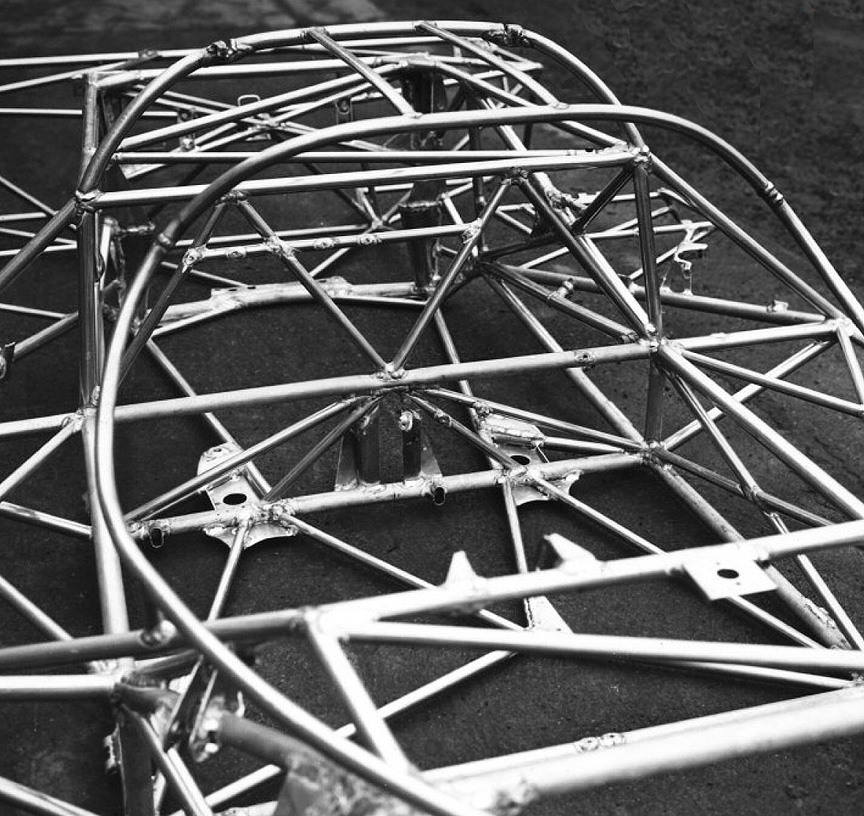
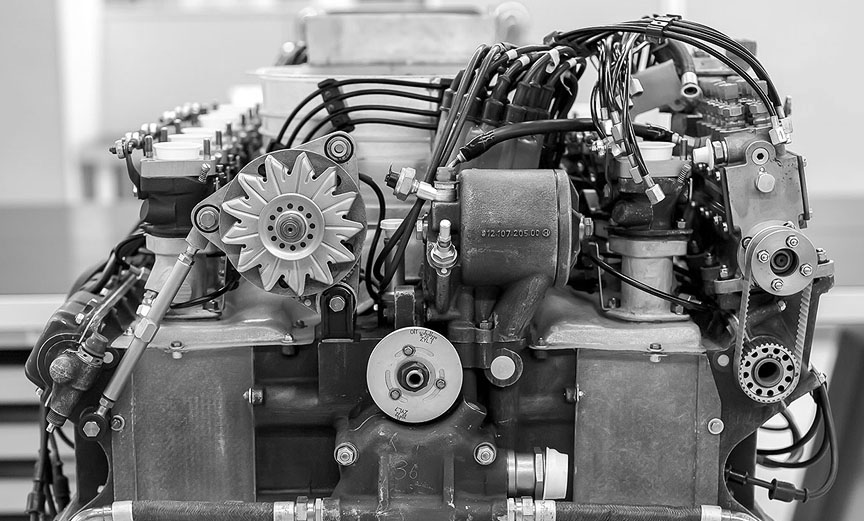
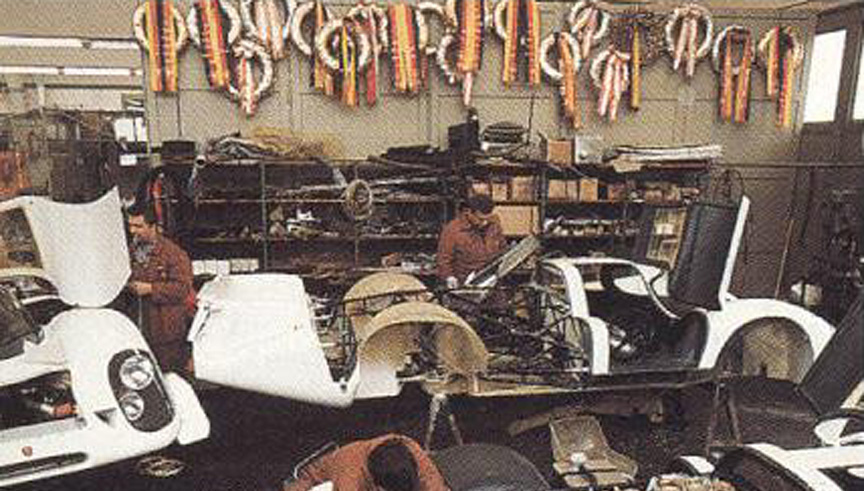
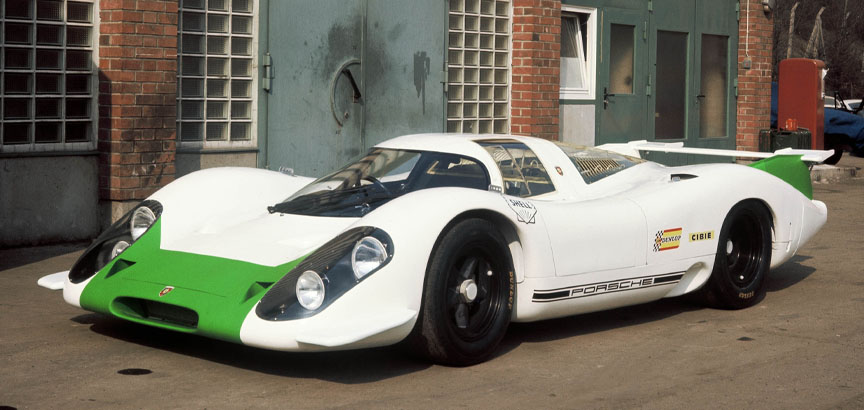
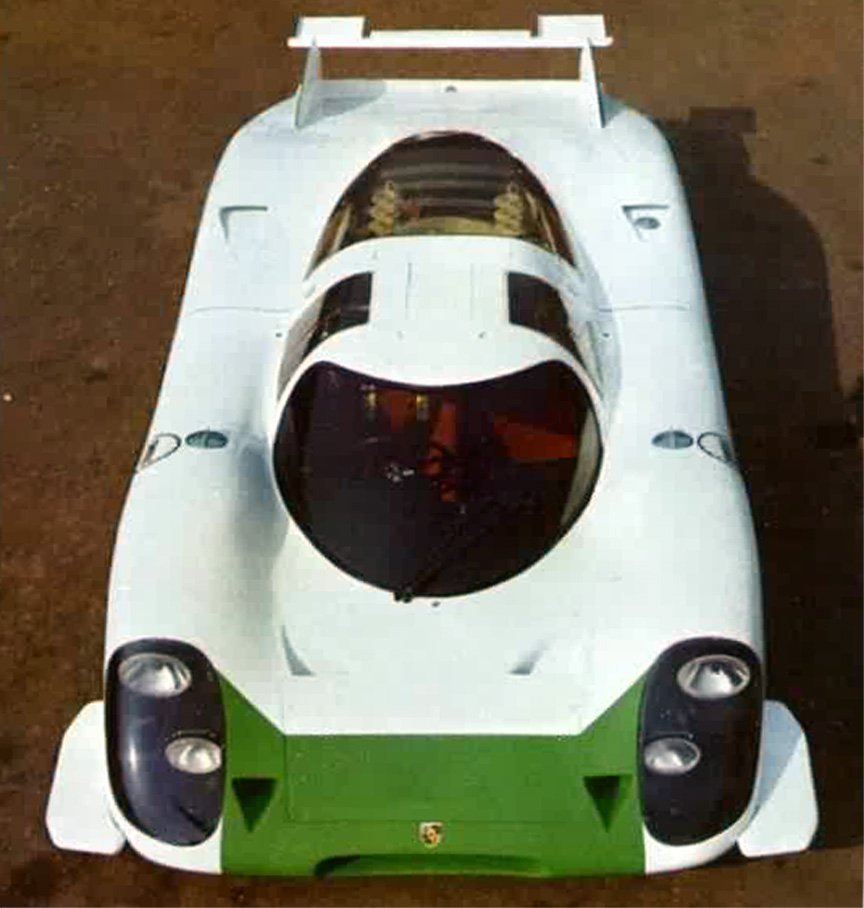
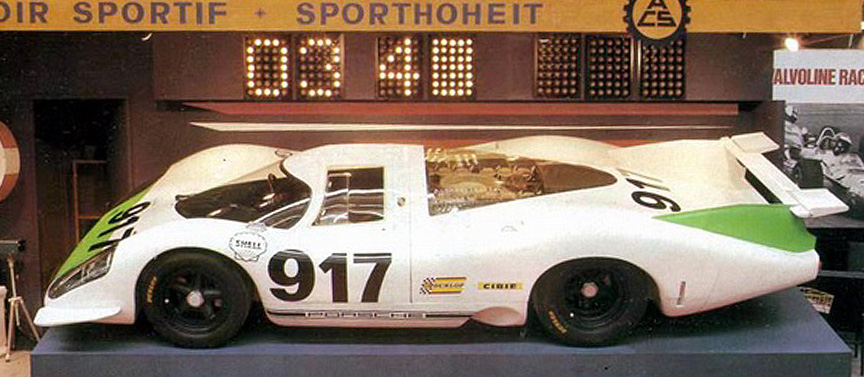
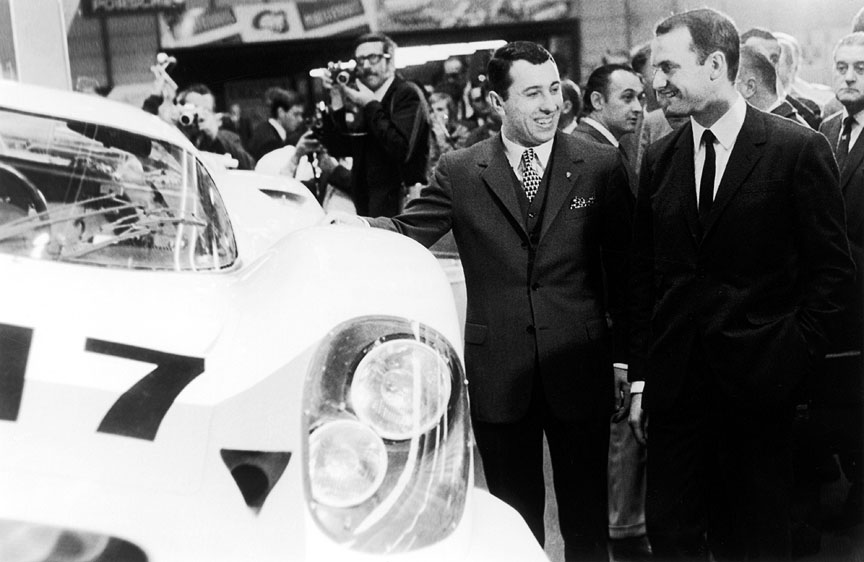
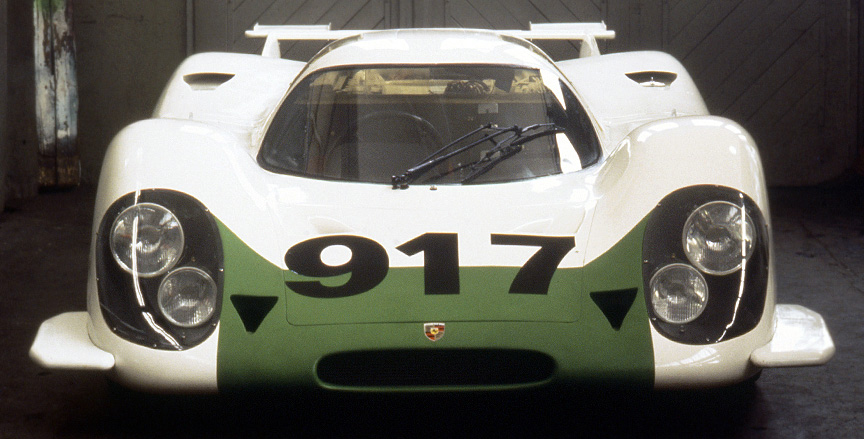
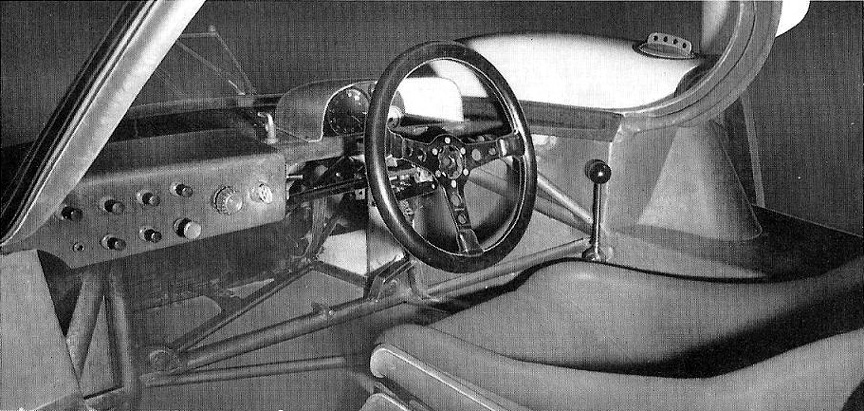
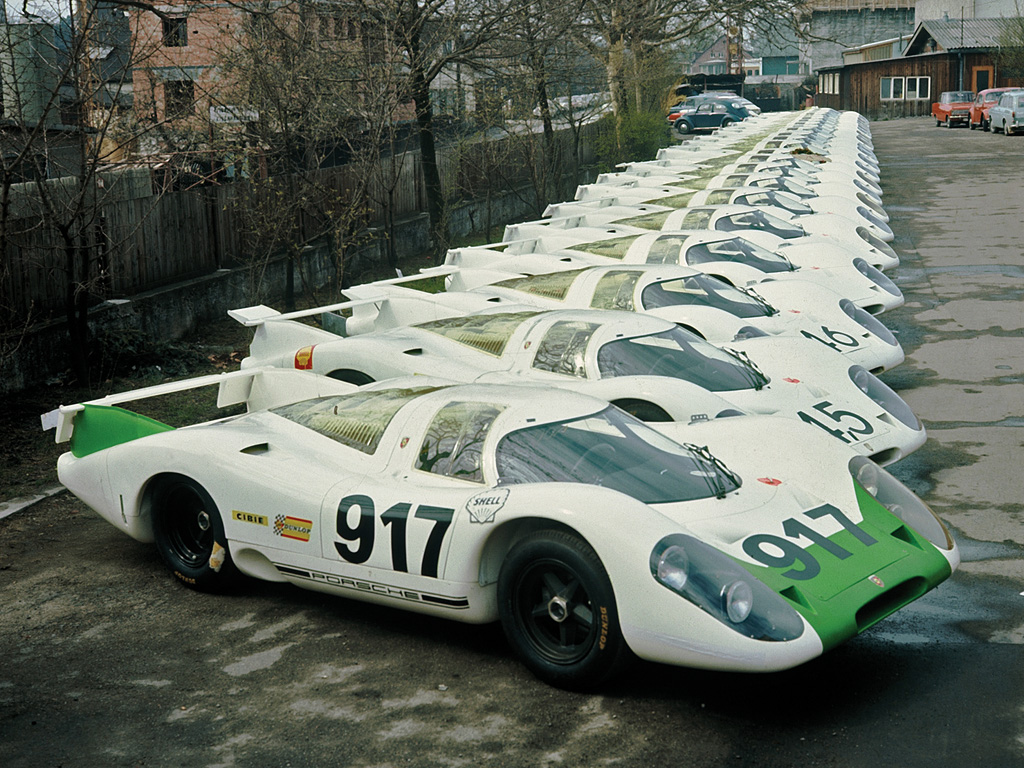
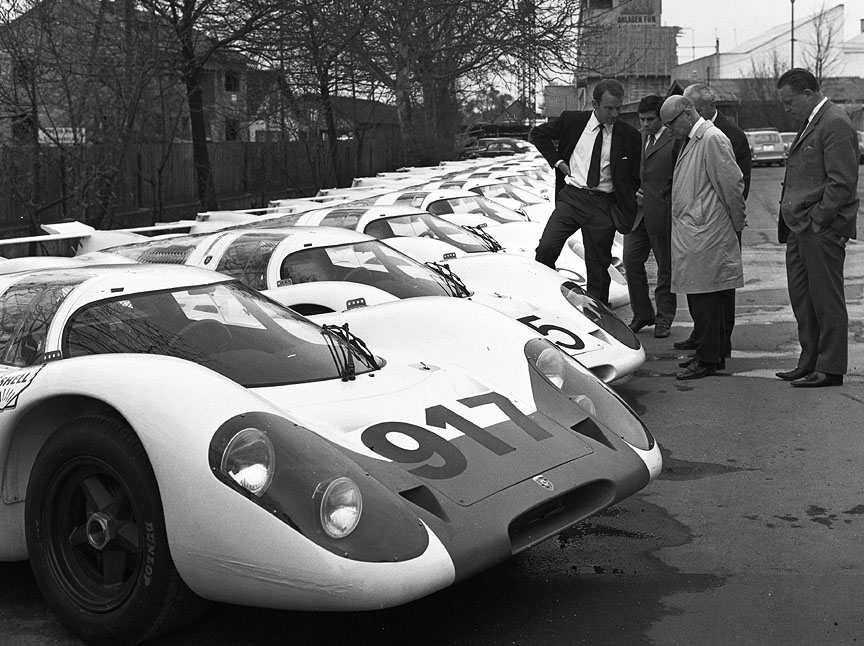
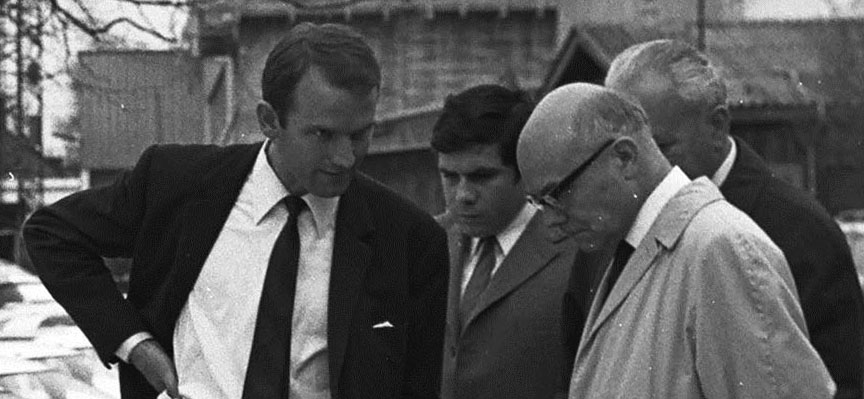
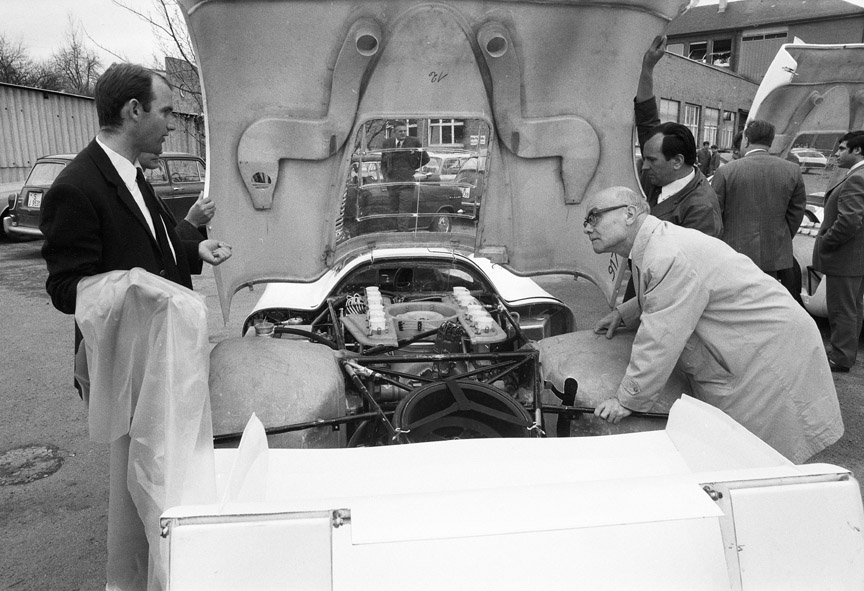
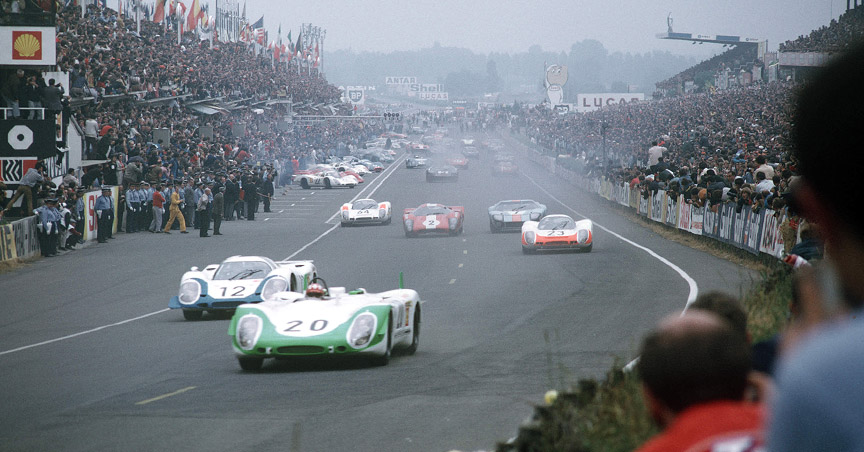
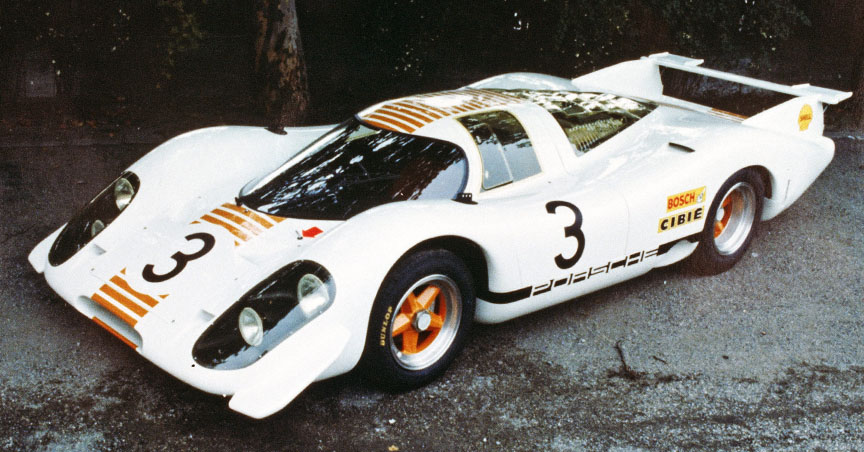
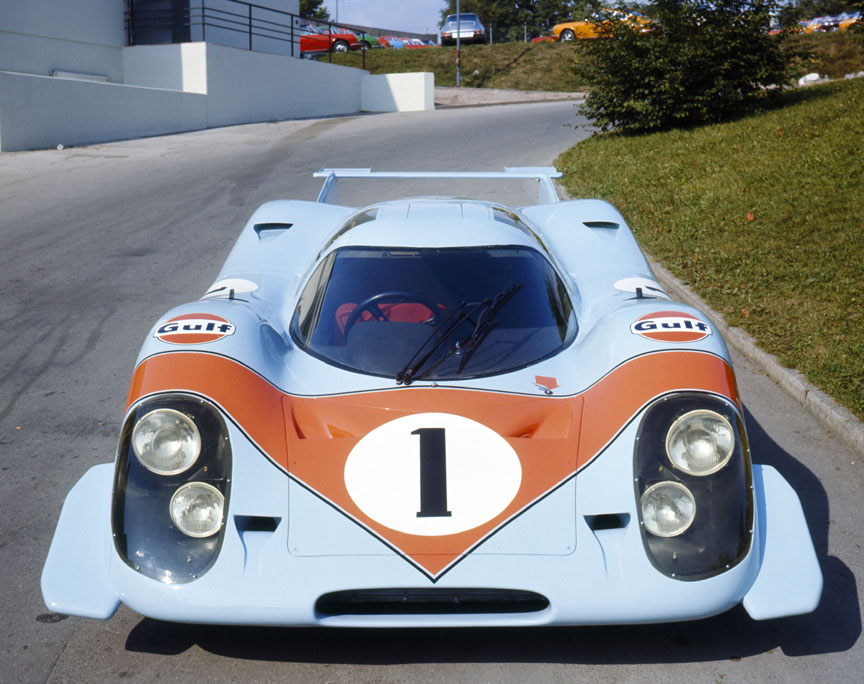



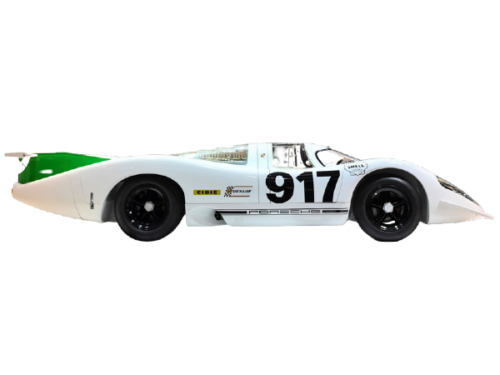
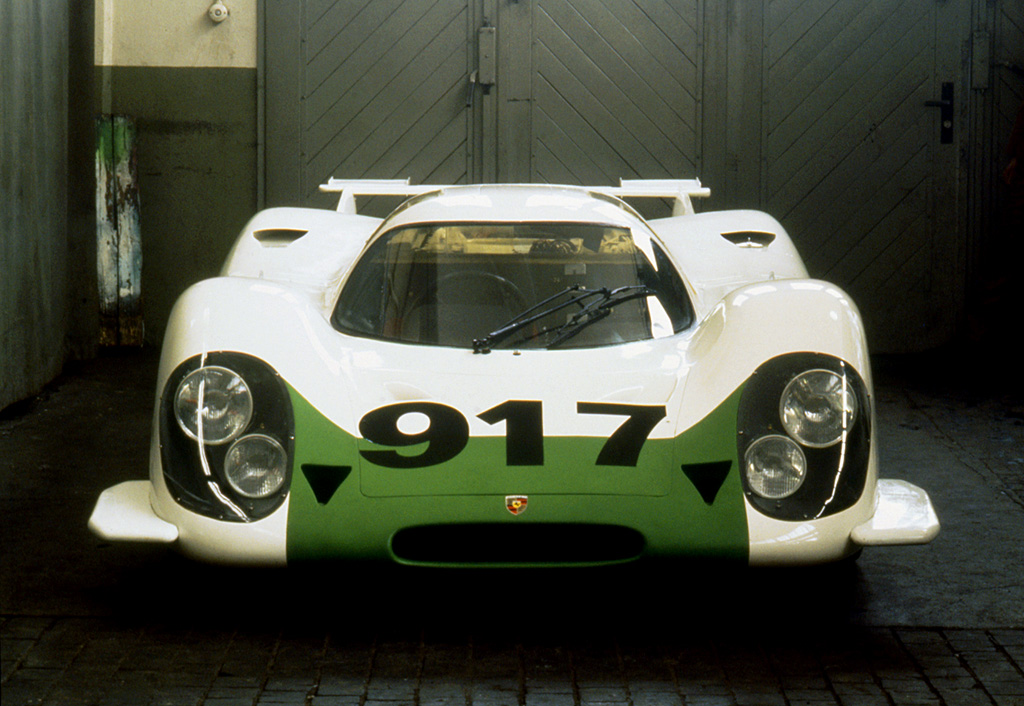
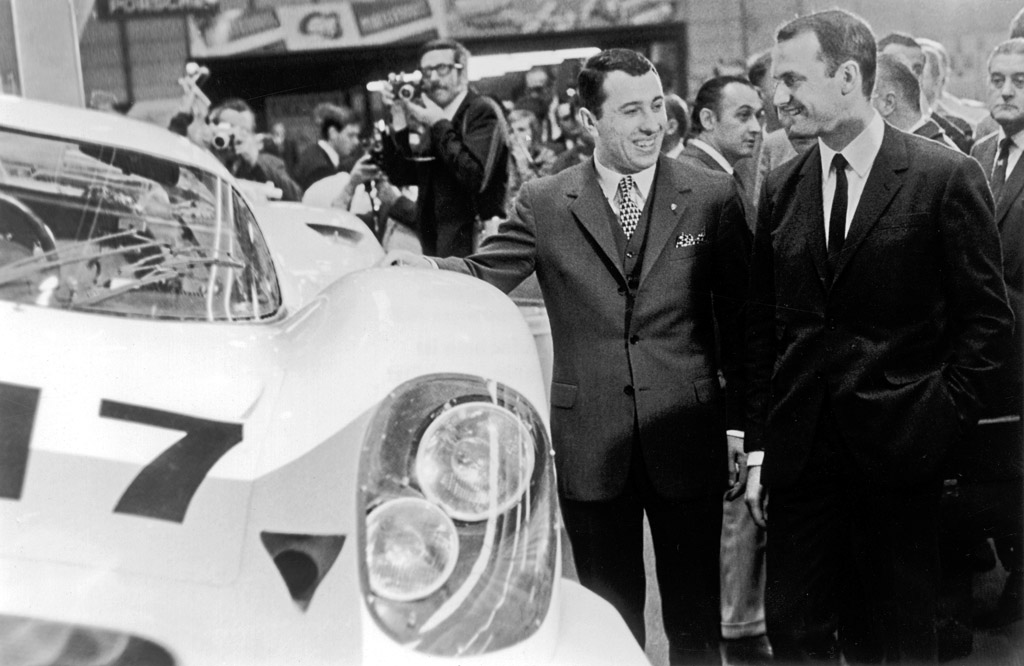
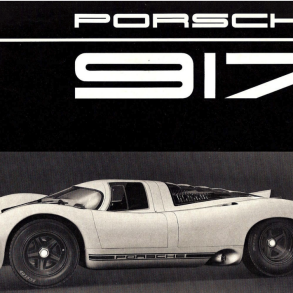








A few detail errors in the report.
– The original 4.5L cars were rated at 520 HP. Later cars were 580 HP.
– the fan was not electrically operated…instead was gear driven via the engine.
– The engne type number was “Type 912″…. I recall firsy seeing this and how strange it was compared to the “car” 912 ! (Type 917.910 was mentioned first in the text).
– Text says frame weighed 93 lbs but the more correct 104 lbs is shown under one of the photos in the article.
0